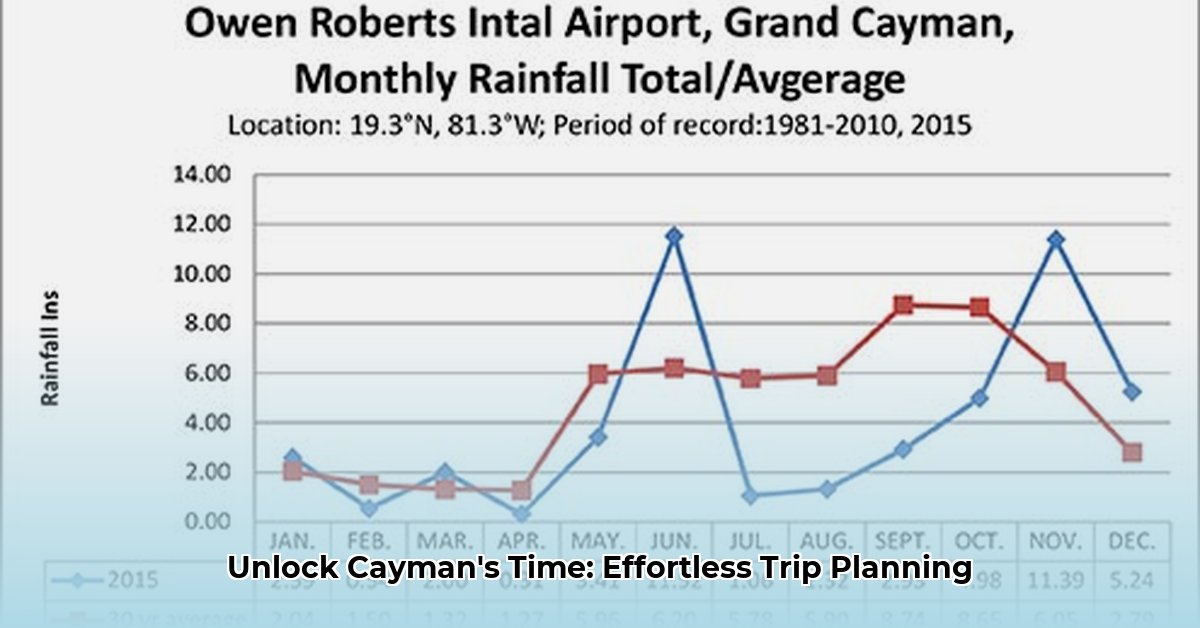
Cayman Islands Time Zone: Your Key to Effortless Island Adventures
Planning a trip to the Cayman Islands? Understanding the local time is paramount for a smooth and enjoyable experience, whether you're a tourist or a business professional. Let's demystify Cayman time and ensure you're well-prepared for your island escape. For more detailed information, check out this helpful resource on Cayman time.
Island Time: Decoding the Simple Truth
The Cayman Islands observe Eastern Standard Time (EST), which corresponds to GMT-5. Importantly, the islands do not observe Daylight Saving Time (DST). This means the clocks remain consistent year-round, simplifying scheduling and reducing confusion. This consistent time zone simplifies planning for both tourists and businesses operating in the islands.
Planning Your Trip: Time Differences Make a Difference
Understanding the time difference is crucial for a successful trip to Grand Cayman or any of the other islands. Here's how it impacts your itinerary:
Flights and Arrivals: Accurately calculate the time difference between your origin and the Cayman Islands when booking flights. This prevents missed connections and ensures timely arrival for your activities. A simple online time zone converter can be invaluable.
Activities and Excursions: Many tours, excursions, and events operate on fixed schedules. Knowing the Cayman time allows for seamless integration into your itinerary, preventing missed opportunities. Confirm schedules directly with operators to ensure accuracy.
Business Meetings: For those combining business with leisure, precise time management is essential. Account for the time difference when scheduling calls, meetings, and other professional engagements. Misunderstandings related to time can be avoided with careful planning.
Local Customs and Business Hours: Businesses generally follow standard operating hours. However, it's always a good idea to verify opening times, especially for smaller establishments or those with unique schedules. A quick call or online check avoids unnecessary delays.
Business in Paradise: Navigating Time Zones for Professionals
For businesses with Cayman connections, understanding the local time zone is vital for efficient operations.
International Collaboration: Coordinating with global partners requires precise scheduling. Knowing Cayman's time zone streamlines communication, ensuring clarity and preventing missed deadlines. Consider using project management tools that automatically account for time zones.
Team Management: If your business employs staff in the Cayman Islands or across multiple time zones, effective time management is essential. This impacts scheduling, productivity, and overall team cohesion. Using collaborative calendars and communication tools designed for international teams can be helpful.
Customer Service Excellence: Optimizing your business hours to best cater to your customer base, wherever they are located, is a key aspect of excellent customer service. Careful consideration of time zones helps maximize accessibility and responsiveness.
Time Zone Comparison: A Quick Reference
Here's a handy table comparing Cayman time (GMT-5) to several major cities:
| Location | Time Difference from Cayman Islands (GMT-5) |
|---|---|
| London (GMT) | +5 hours |
| New York (EST) | Same |
| Los Angeles (PST) | +2 hours |
| Toronto (EST) | Same |
| Sydney (AEST) | -14 hours |
Crafting a Sustainable Tourism Business Plan: A Roadmap for Success in the Cayman Islands
A successful tourism business in the Cayman Islands requires a sustainable approach, balancing economic growth with environmental protection and social equity. Following these steps will help create a robust and responsible business plan:
Contextual Understanding: Research existing environmental regulations and government initiatives to ensure legal compliance and alignment with local goals. [1]
Niche Definition: Identify your specific sustainable tourism offering (ecotours, eco-lodges, sustainable diving, etc.). A defined niche streamlines marketing and service delivery.
Environmental Impact Assessment: Assess your business' potential environmental impact (energy consumption, waste generation). Identify areas for improvement and mitigation strategies.
Community Engagement: Collaborate with local communities to ensure cultural sensitivity and explore potential collaborative opportunities. Active participation fosters a sense of shared ownership.
Financial Projections: Develop realistic financial projections encompassing initial investments and long-term sustainability. Demonstrate financial viability while maintaining environmental responsibility.
Marketing and Outreach: Highlight your sustainability commitments to attract environmentally conscious customers. Showcase your unique value proposition.
Ongoing Monitoring and Evaluation: Regularly monitor and evaluate your business' environmental and social impact to ensure continuous improvement and adaptation.
[1]: (Note: At the time of publication, the provided link did not provide accessible data. Further research should be conducted to identify suitable sources for this section.)